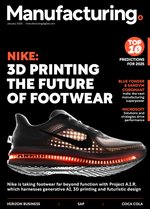Three steps to building a resilient enterprise ecosystem

Organisations have seen their digital transformation projects derailed over the last two years. From the supply chain problems to financial and political volatility, the pace of disruption has accelerated, requiring businesses to constantly adapt to changing market dynamics. Building a resilient enterprise ecosystem – one which enables your business to adapt and withstand inevitable hiccups and bumps in the road – requires effective and efficient use of product data.
Product data is precious. If harnessed properly, it can deliver insights that allow your organisation to pivot with agility when you need to adapt to new business requirements and processes. Consider these steps you can take to unleash product data effectively and efficiently.
Make data accessible and contextual
For data to generate value, it must be accessible and transparent.
Break down silos so people can access information and data, in a secure way, across the product lifecycle. Context is also critical. You must be able to get your data into a central place and expose it in a way that fits semantically with other data in your organisation, and you must be able to contextualise your IoT performance data with the intended results. For example, data on fuel consumption across a specific line of vehicles isn’t helpful without understanding the breakdown between different engine types such as hybrid, V6, and V8. You need to know what to expect from each individual vehicle to properly contextualise the data. Achieving this level of transparency and context may require a move away from vendors and tools that lock you in. Look for a platform that fosters secure collaboration and makes data accessible through open standards.
Use technology to focus your people on what matters most
Consider how you can free up your IT team to focus on digital transformation rather than on backups and maintaining servers. Likewise, evaluate how you can help your business teams to share product data more easily so they obtain insights that will help them deliver value. This may mean a move to an open and flexible SaaS platform that allows you to keep pace with evolving technology and implement customizations without creating crippling technical debt or locking you into a specific set of capabilities. There is no chance out-of-the-box software will be able to address every business challenge you have next year, so you need the ability to adapt to changing processes and requirements.
Align your engineering team with your business goals
Because product data can be complex and hard to understand, it often isn’t communicated effectively to the business. For example, a multi-fidelity, multi-domain simulation may have results that are gigantic and hard to analyse. However, the results of the analysis may still be valuable for the business to track. The inputs into that design process are also valuable; for example, which CAD models were used, and how an engineer modified or simplified it.
That’s why it’s critical that engineering and the business align and communicate about what data is needed to drive business value. You can facilitate this by using a platform that allows you to collaborate securely, with context and traceability throughout the product lifecycle.
If you use these approaches to optimise and analyse your product data, you’ll be well on your way to building a resilient enterprise ecosystem that allows your organisation to adapt with agility.
Byline written by Rob McAveney CTO at Aras.
- Schneider Electric's Commitment to Sustainable ManufacturingSustainability & ESG
- Lenovo & Saudi Alat Building Green Manufacturing FacilitySustainability & ESG
- BMW: Creating Economic Circularity through Battery CreationSustainability & ESG
- Nissan Brings Biodiversity to the Factory through RewildingSustainability & ESG


